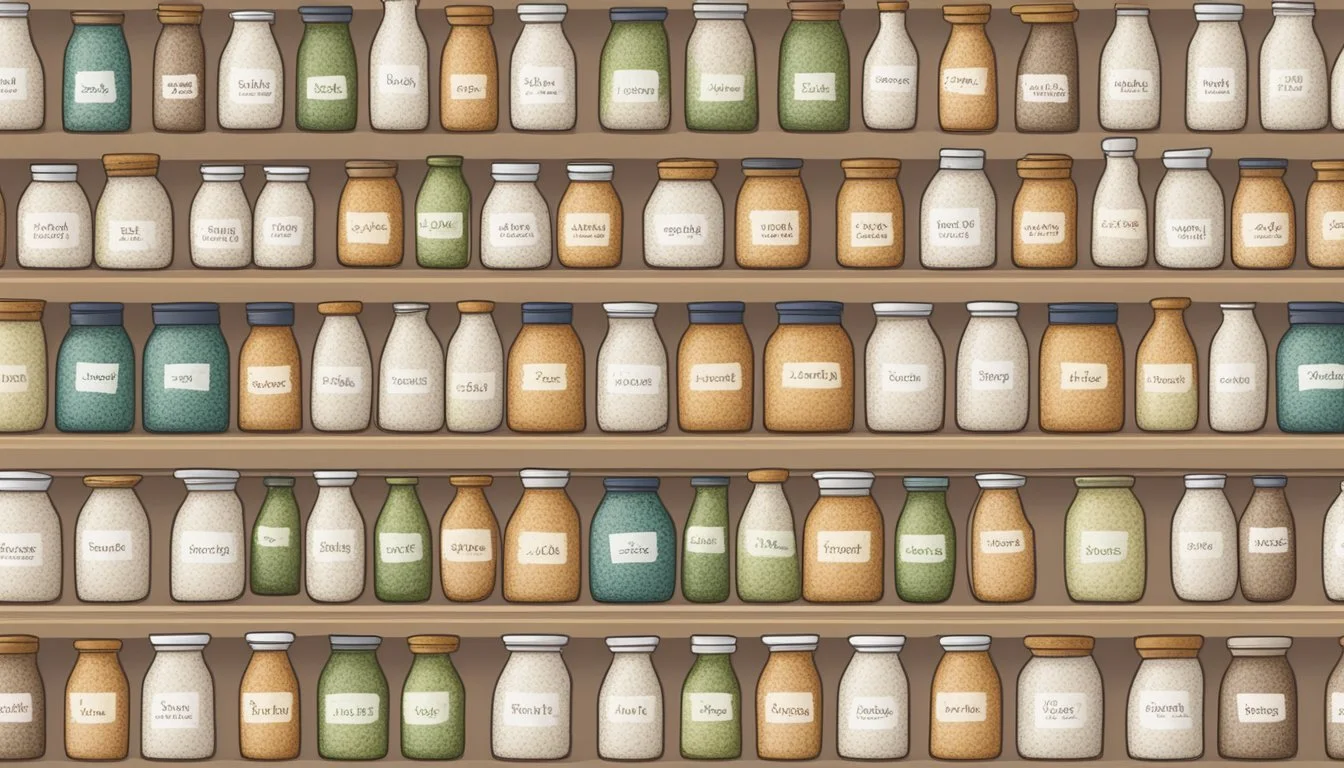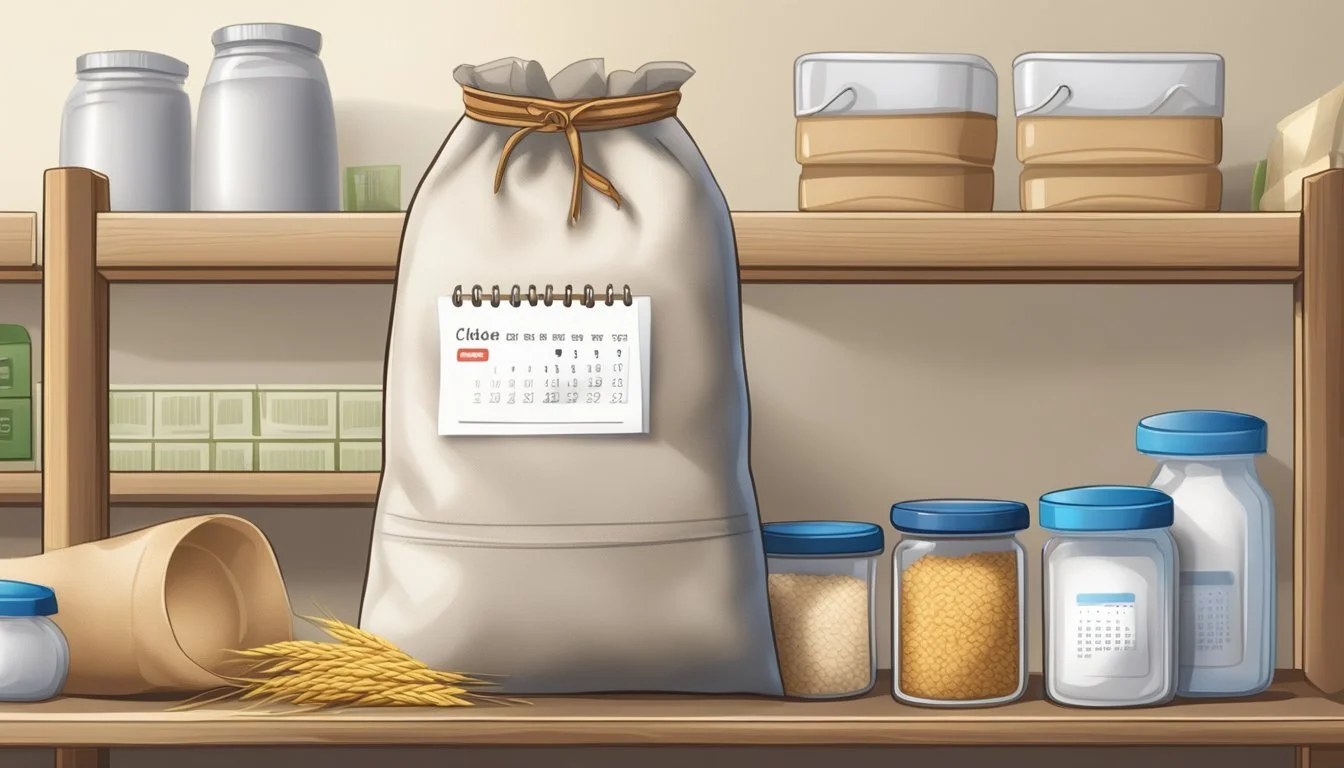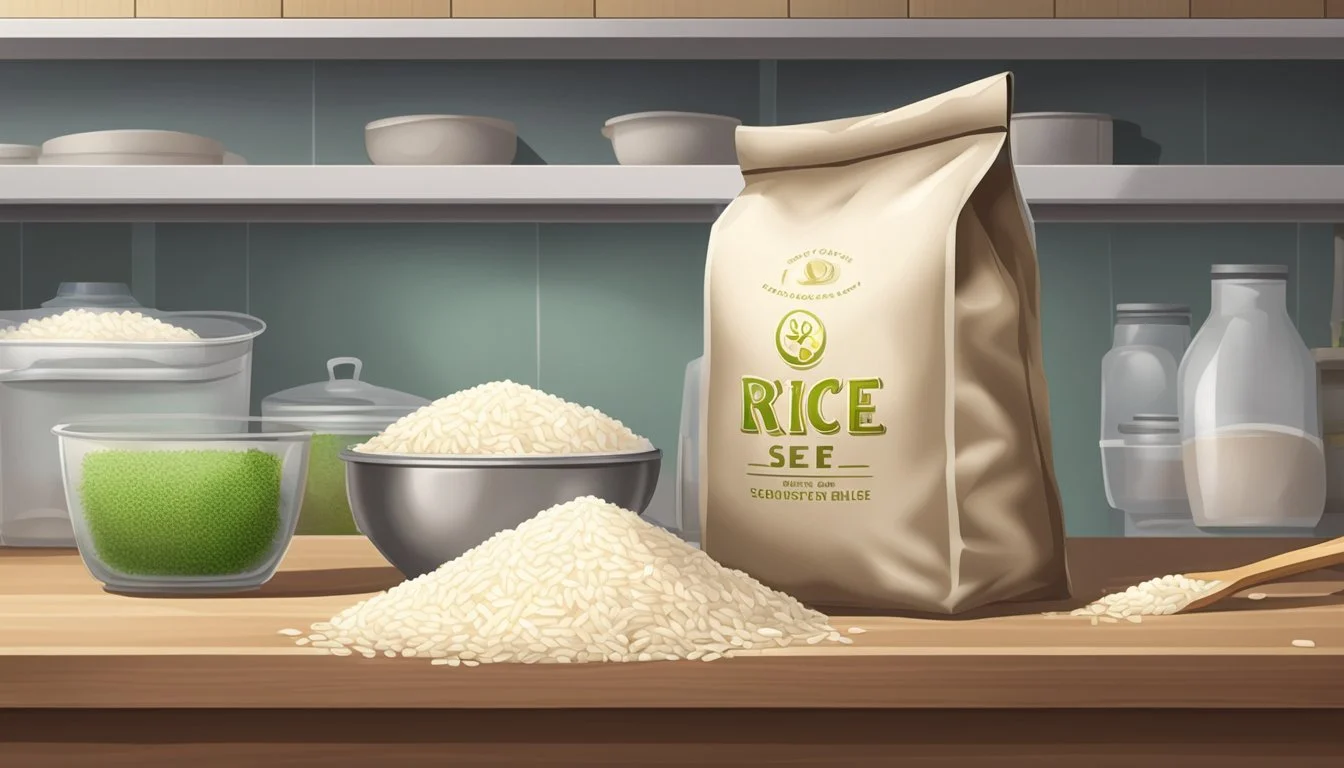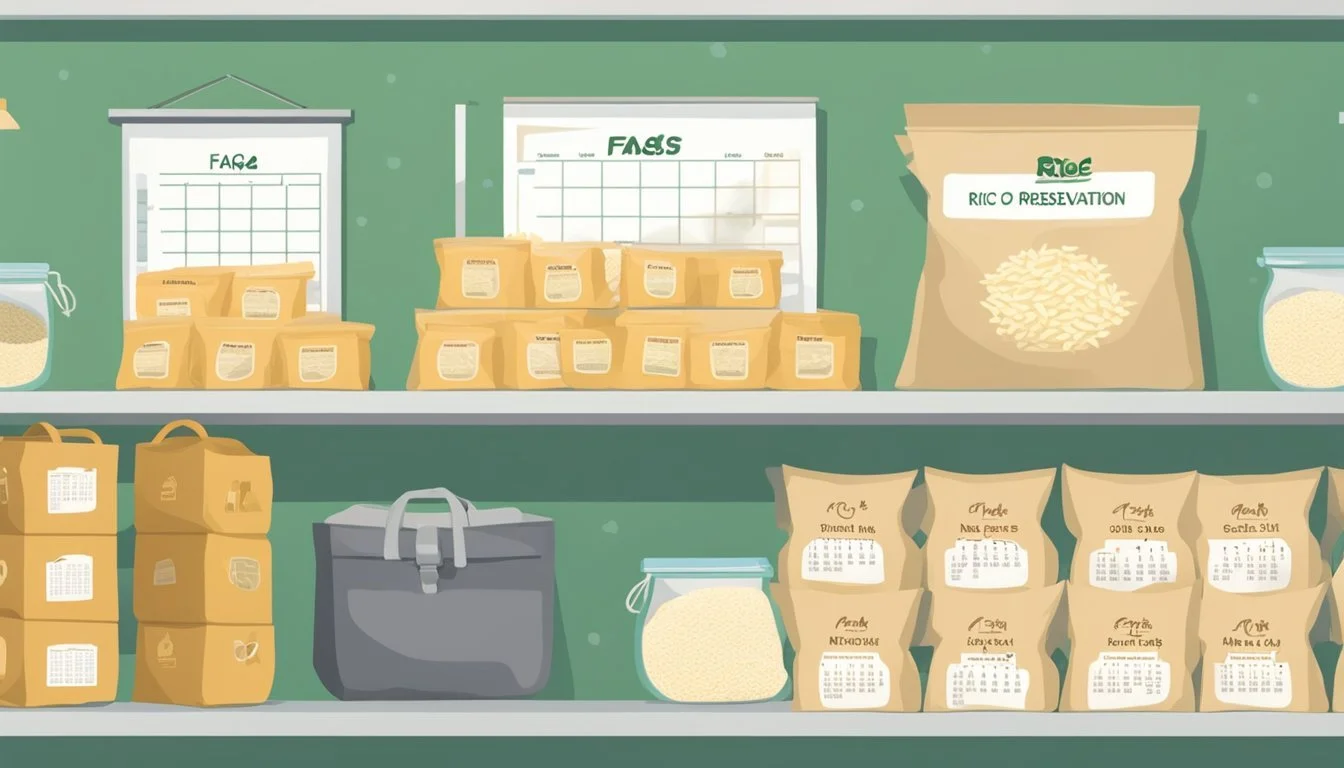How Long Does Rice Last?
Uncovering Shelf Life and Storage Tips
Rice (What wine goes well with rice?), a staple in pantries around the globe, varies in its longevity based on type, processing, and storage conditions. Uncooked white rice, known for its polished grains, has a significantly long shelf life due to the removal of its husk, bran, and germ, which are components that spoil more readily. When stored properly in a cool, dry place, and preferably in an airtight, oxygen-free container, white rice can maintain its quality for many years, sometimes even up to 30 years under ideal conditions.
Conversely, uncooked brown rice, which retains its bran layers, offers a wealth of nutrients but has a shorter shelf life, typically up to 6 months due to the natural oils present in the bran layer. These oils can cause brown rice to go rancid if exposed to heat, light, or moisture. Monitoring the storage environment is crucial to preserving brown rice's quality.
Cooked rice (how long does cooked rice last?) requires careful handling to ensure food safety. Left at room temperature, cooked rice is prone to bacterial growth, particularly Bacillus cereus, which can lead to foodborne illness. Therefore, it’s recommended to refrigerate cooked rice within two hours of cooking and consume it within 3 to 5 days. If frozen, it can extend its usability up to 6 months while maintaining its quality. It’s imperative to ensure the rice is cooled to room temperature before sealing it in an airtight container to prevent moisture buildup and further bacterial growth.
Types of Rice
Different types of rice not only vary in taste and texture but also in shelf life and nutritional content. Understanding these variations is essential for proper storage and usage.
White Rice
White rice, known for its versatility and long shelf life, is a milled rice from which the hull, bran, and germ have been removed. This refining process extends its shelf life, allowing white rice to last at least 4-5 years, due to the removal of the bran where natural oils reside that might otherwise cause spoilage.
Brown Rice
Brown rice is considered a whole grain, as only the hull is removed during processing, retaining the bran and germ layers. These layers contain beneficial nutrients but also natural oils which limit brown rice's shelf life to approximately 6 months. Storing it in a cool, dark place can help preserve its freshness.
Jasmine Rice
Jasmine rice (how long does jasmine rice last?), a type of long-grain white rice, has a subtle floral aroma and a soft, sticky texture when cooked. Its shelf life is similar to that of basic white rice; however, the presence of slightly higher oil content compared to other types of white rice may influence this duration.
Basmati Rice
Basmati rice, another long-grain variety, is native to the Indian subcontinent and is prized for its nutty flavor and aromatic scent. It is available in both white and brown versions, with the white type having a shelf life comparable to white rice, while the brown variety follows the shelf life typical of brown rice due to its bran content.
Arborio Rice
Arborio rice is a short-grain variety, often used in risotto, known for its creamy texture. This type of rice also falls under the white rice category and can last for years if stored properly. However, because of its specific use in dishes that require a certain creaminess, its best quality is maintained when used within a couple of months.
Wild Rice
Contrary to its name, wild rice (how long does wild rice last?) is not actually rice but a species of grass seed. It has a chewy texture and a nutty flavor. Wild rice's shelf life can be extended far beyond that of brown rice, as it has a lower oil content, allowing for storage of several years when kept in ideal conditions.
Storing Rice
The shelf life of rice varies significantly across different types, and storage conditions play a pivotal role. Optimal storage conditions include a cool, dry place away from moisture and pests, and using an airtight or sealed container.
In the Pantry
For white rice — which includes polished and instant varieties — the pantry serves as an ideal storage space. It should be stored at room temperature, in a dry and dark area to prevent moisture and light from diminishing its quality. Utilizing airtight containers helps in protecting the rice from bugs and other pests, as well as from odors that might be present in the pantry. Properly stored in these conditions, white rice can last for over 30 years.
Pantry Conditions: Cool, dry, dark
Container: Airtight/sealed container
Expected Shelf Life: Up to 30 years for white rice
In the Fridge
Cooked rice or leftover rice should be refrigerated if it is to be kept for future consumption. Refrigeration reduces the risk of bacterial growth, which is prevalent at room temperature. Storing rice in the fridge is done best when placed in a covered airtight container to maintain its quality and prevent it from absorbing flavors from other foods. Typically, refrigerated rice maintains its quality for 4 to 6 days.
Refrigeration Conditions: 35-40°F (1.6-4.4°C)
Container: Covered airtight container
Expected Shelf Life: 4 to 6 days for cooked rice
In the Freezer
For an extended storage option beyond refrigeration, the freezer is suitable for both uncooked and cooked rice. Freezing rice, especially in airtight containers or freezer bags, extends its shelf life while preserving its quality. For cooked rice, freezing can extend its edible period up to six months, although the quality is best only for the initial months. It's important to note that foods kept constantly frozen at 0°F (-18°C) will keep safe indefinitely, but quality may vary.
Freezer Conditions: 0°F (-18°C) or lower
Container: Airtight containers/freezer bags
Expected Shelf Life: 6 months for optimal quality of cooked rice
Understanding Rice Shelf Life
The shelf life of rice varies significantly depending on whether it's uncooked or cooked. Factors such as the type of rice, packaging, and storage conditions can either extend its shelf life or lead to waste.
Uncooked Rice
White Rice:
Shelf life: At least 4-5 years, potentially longer under optimal storage conditions.
Storage: Keeping it in a cool, dry place away from sunlight and moisture ensures maximum longevity.
Vacuum sealing: Extends shelf life indefinitely.
Whole Grain Rice (e.g., Brown, Black, or Wild Rice):
Shelf life: Approximately 6 months to 1 year due to natural oils that can spoil.
Storage: Refrigeration can extend its shelf life.
Cooked Rice
Shelf life: 4 days to 1 week in the refrigerator.
Freezer shelf life: Up to 6 months, though quality may begin to deteriorate after this point.
Storage tip: Use airtight containers to retain freshness and prevent contamination.
Room Temperature: Should not be left out for more than 2 hours to avoid bacterial growth.
Remember, the expiration date is a good indicator, but always inspect rice for changes in appearance, smell, and texture to ensure it's safe to eat.
Recognizing Spoilage
Rice spoilage can be identified reliably through several sensory indicators. These include visual signs, distinctive odors, altered tastes, and changes in texture that indicate it's time to discard the rice.
Visual Indicators
One should inspect rice for changes in color and the presence of mold. Moldy rice will typically exhibit spots or patches that are green, black, or white, and should be considered unsafe for consumption. A change in color to a yellowish hue can also suggest spoilage, especially when it accompanies other spoilage signs.
Color changes: Look for any discolorations or dullness.
Presence of mold: Spots, fuzz, or growths indicate mold.
Smell and Taste
Rice that has gone bad will often have a rancid or off smell, which is a clear sign that it should not be eaten. The taste, similarly, may become unpleasant or sour, although tasting should be avoided if spoilage is suspected based on other signs.
Rancid smell: A strong, unpleasant odor that is not typical of fresh rice.
Sour taste: A distinctively off or sour flavor.
Texture Changes
The texture of rice can also signal spoilage. Spoiled rice may become extremely hard or dry, or conversely, display a slimy texture. Rice that feels slimy or sticky has likely been affected by bacterial growth and should be discarded.
Hard and dry grains: Indicates over-aged rice, likely spoiled.
Slimy or sticky texture: Suggests bacterial growth and spoilage.
Health Considerations
When storing and consuming rice, it is critical to be aware of potential health risks such as food poisoning from bacteria, most notably Bacillus cereus. Proper handling and storage are key in preventing contamination and ensuring food safety.
Food Poisoning Risks
Rice can harbor Bacillus cereus, a bacterium that survives even after the rice is cooked. If rice is left at room temperature for an extended period, these bacteria can multiply and produce toxins that can lead to food poisoning. Symptoms often include vomiting and diarrhea and can appear within 1 to 5 hours of consuming contaminated rice.
Preventing Contamination
To minimize the risk of bacterial growth and food poisoning, one should always follow these safety tips:
Store cooked rice in the refrigerator within two hours of cooking and consume it within three to four days.
Reheat cooked rice to an internal temperature of 165°F (74°C) to destroy any potential bacteria.
When handling rice, maintain a clean environment and use clean utensils to avoid introducing any contaminants.
Utilizing Leftover Rice
Utilizing leftover rice can be both a safe and creative endeavor in the kitchen. It's crucial to follow safe reheating practices to prevent foodborne illness and equally important to be imaginative with recipes to elevate the humble leftovers into a delightful meal.
Safe Reheating Practices
To ensure the safety of leftover rice, one must reheat it to 165°F, which is the temperature needed to kill potential bacteria. Leftover rice should be stored in the fridge within two hours of cooking and used within 3 to 4 days. Before reheating, leftover rice should be broken up to avoid cold spots. If using a microwave, stir the rice occasionally to ensure even heating.
Method Instructions Microwave Add a splash of water, cover, and heat, stirring regularly. Stove Top Place rice in a pan with a small amount of water, heat slowly, and stir. Oven Cover rice with foil, add some water, and bake at 300°F until hot.
Creative Rice Dishes
Leftover rice presents an opportunity to create innovative dishes. A risotto can be easily reinvigorated with added broth and fresh ingredients, simmering until creamy. Rice lends itself well to a variety of recipes, from a simple yet comforting casserole to an inventive sushi roll.
Rice Dish Ideas:
Transform into a savory rice pudding with milk, sugar, and spices.
Make a hearty fried rice, tossing in vegetables, proteins, and soy sauce (how long does soy sauce last?).
Use in stuffed peppers or tomatoes for a wholesome meal.
Assemble a rice salad with fresh vegetables and a tangy vinaigrette.
Leftover rice should not be seen as mere scraps, but as a versatile ingredient ready to shine in a multitude of dishes. With the right techniques, one can create safe and sumptuous meals that please the palate and reduce food waste.
FAQs on Rice Preservation
How long does rice last when refrigerated?
Uncooked white rice, when stored in a refrigerator, can extend its shelf life considerably due to the cold environment slowing down the process of deterioration. However, for most types of rice, refrigeration is unnecessary if they are kept dry and sealed.
What is the shelf life of uncooked white rice?
Uncooked white rice, if kept dry and airtight, can last indefinitely. The key is to prevent exposure to contaminants and moisture. When vacuum-sealed with oxygen absorbers, its quality can be maintained for 30 years in cooler storage (around 40°F) and up to 20 years at pantry temperatures (around 77°F).
Does freezing affect rice quality?
Freezing rice can preserve its texture and flavor, especially for cooked rice. For uncooked rice, freezing is generally not required, but it does not harm the rice if done properly in an airtight container.
Can rice deteriorate if not stored properly?
Rice past its prime may lose its texture and flavor. Factors that hasten deterioration include heat, moisture, and exposure to air. Brown rice, which is less milled and retains more natural oil, is more prone to spoilage compared to white rice.
What are signs that rice is no longer good to eat?
Off-odors, a change in texture, discoloration, or evidence of pests are clear signs that rice is not safe to eat. Food safety is paramount; when in doubt, it's best to dispose of questionable rice.
Are carbohydrates in rice affected by long storage periods?
The carbohydrate content does not significantly change over time, but the aforementioned factors can impact rice's edibility. Uncooked rice is mainly composed of carbohydrates that do not spoil easily if conditions are stable.
How to identify contaminants in rice?
Visual inspection can reveal pests, mold, or unusual specks. If rice has an unpleasant smell or the packaging is damaged, it's advisable to discard it to avoid potential health risks.







